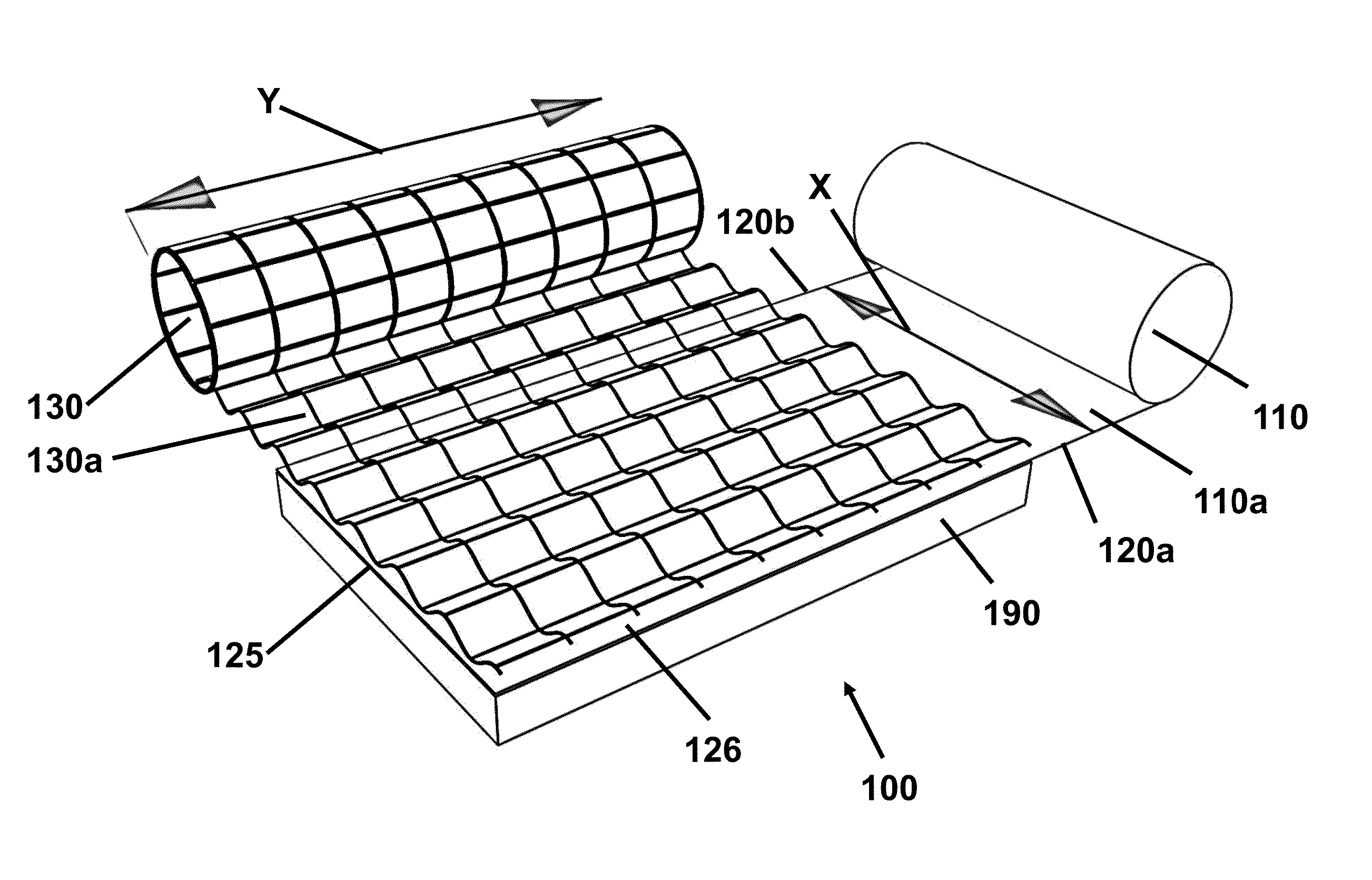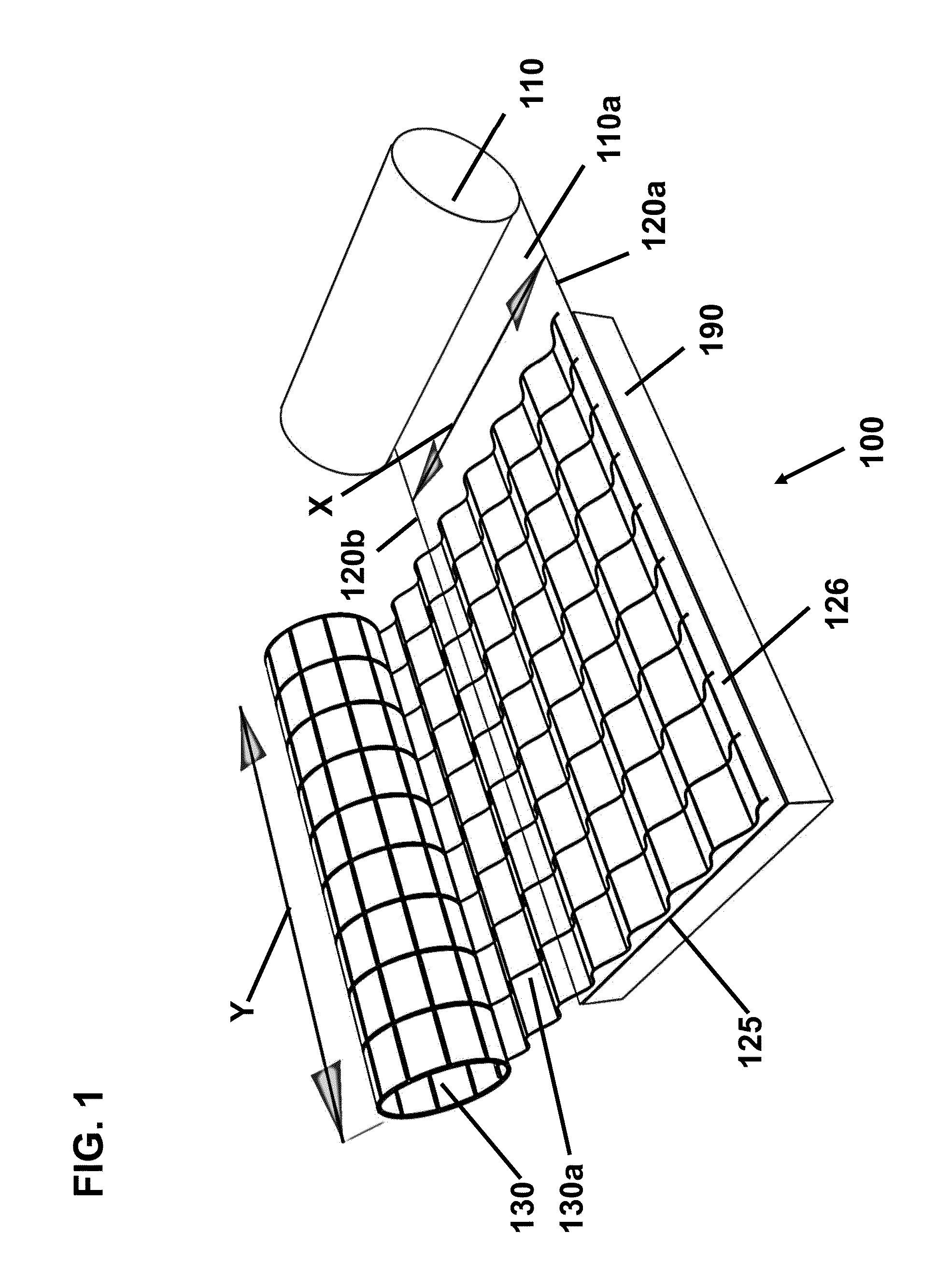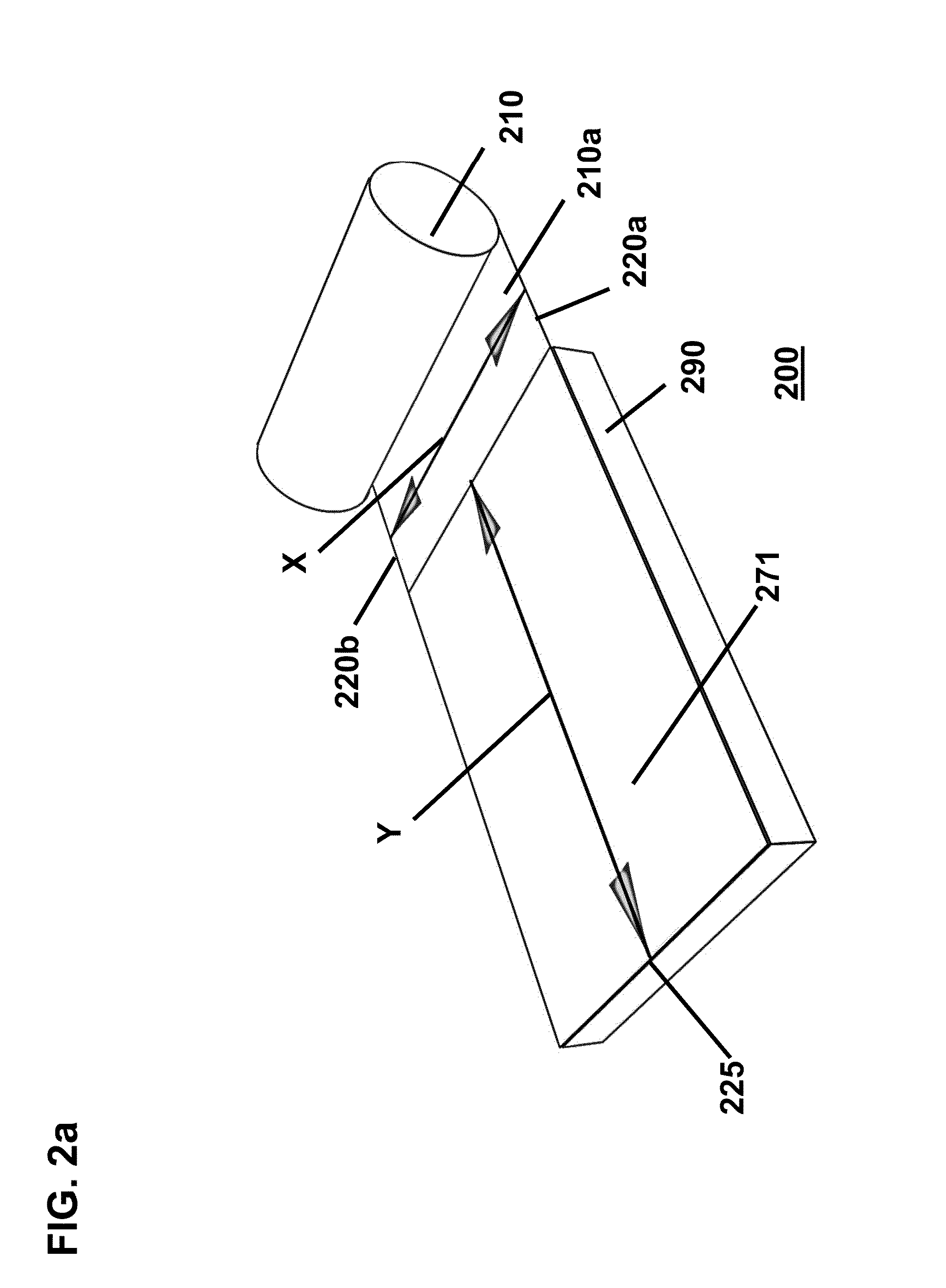Multiple Opening Counter-flow Plate Exchanger and Method of Making
a plate exchanger and counter-flow technology, which is applied in the field of multi-opening, single membrane plate exchangers, continuous fold single spacers within, and continuous fold single spacers. it can solve the problems of material waste during manufacturing, incompatibility of existing plate exchangers, and increased end-use costs of exchangers, so as to reduce construction time, improve the effect of sealing characteristics and superior results in pressurized crossover leakag
- Summary
- Abstract
- Description
- Claims
- Application Information
AI Technical Summary
Benefits of technology
Problems solved by technology
Method used
Image
Examples
Embodiment Construction
[0059]FIG. 1 shows a simplified schematic diagram illustrating a preferable starting position to make a multiple opening, counter-flow core 100. In FIG. 1, a single continuous membrane strip of membrane 110a of width X is drawn in substantially opposite direction from a reel of membrane, 110. Start of membrane 110a is produced by 90 angle cut 125. Membrane strip 110a is arranged in the same plane on the top surface of a base frame or platform 190 with a first edge 120a and a second edge 120b. Strip of separator 130a is drawn at a 90 angle to strip 110a from reel of separator 130 of width Y. Start of separator 130a is produced by 90° angle cut 126.
[0060]FIGS. 2a-f show a series of simplified schematic diagrams illustrating steps in a reverse fold technique utilizing a single continuous membrane strip and continuous spacer strip. While the cross insertion of a separator layer has been omitted from the depiction for the sake of simplicity, it will be understood that the insertion of a ...
PUM
| Property | Measurement | Unit |
|---|---|---|
| Angle | aaaaa | aaaaa |
| Flow rate | aaaaa | aaaaa |
| Length | aaaaa | aaaaa |
Abstract
Description
Claims
Application Information
 Login to View More
Login to View More - R&D
- Intellectual Property
- Life Sciences
- Materials
- Tech Scout
- Unparalleled Data Quality
- Higher Quality Content
- 60% Fewer Hallucinations
Browse by: Latest US Patents, China's latest patents, Technical Efficacy Thesaurus, Application Domain, Technology Topic, Popular Technical Reports.
© 2025 PatSnap. All rights reserved.Legal|Privacy policy|Modern Slavery Act Transparency Statement|Sitemap|About US| Contact US: help@patsnap.com



